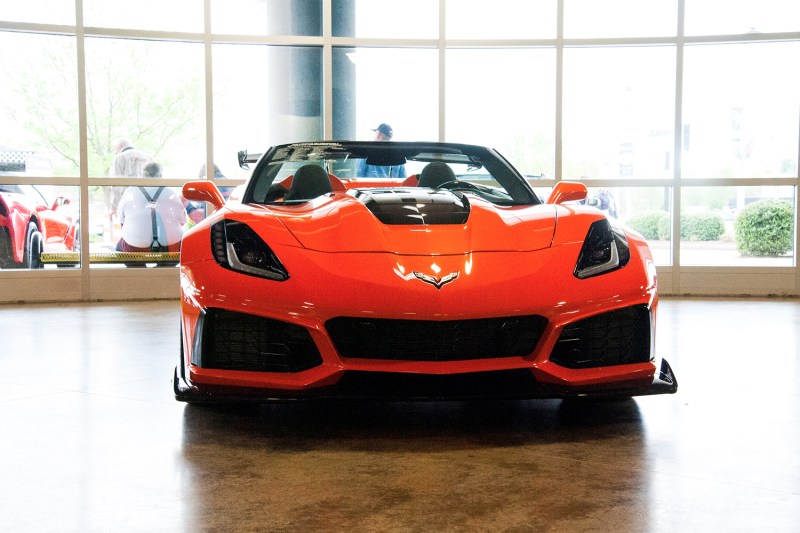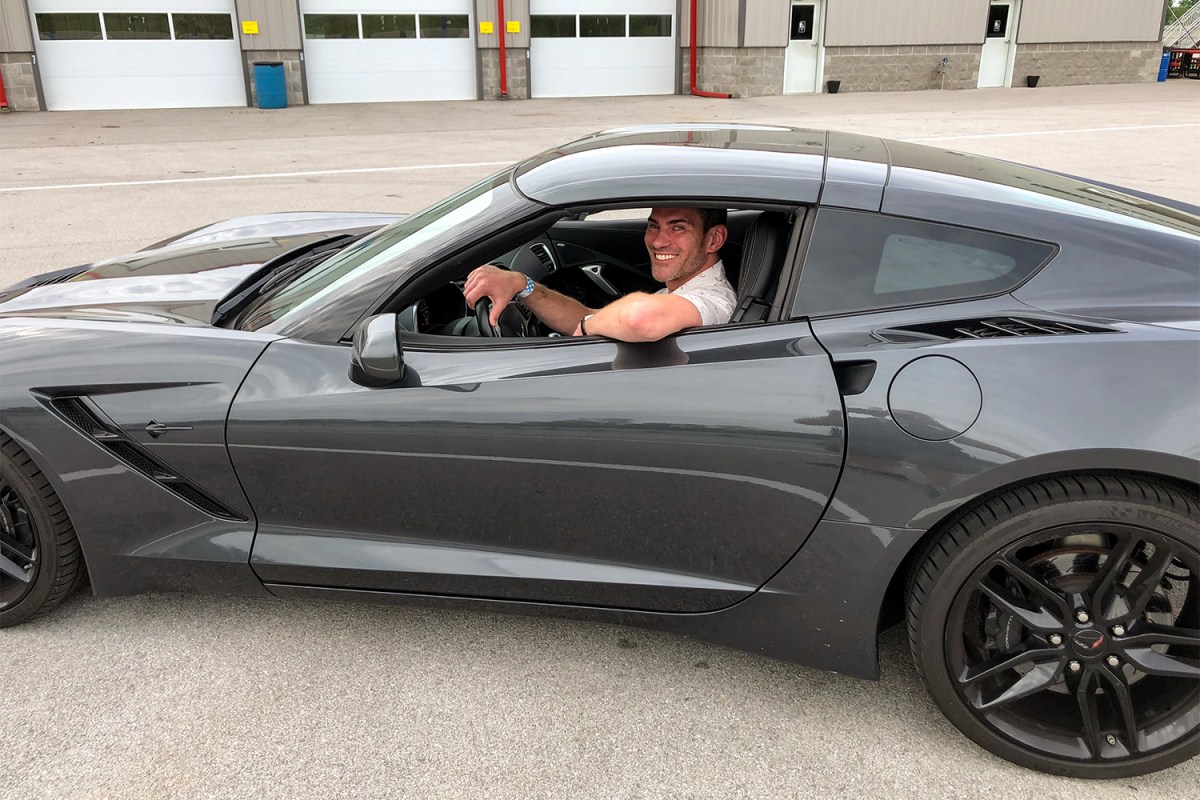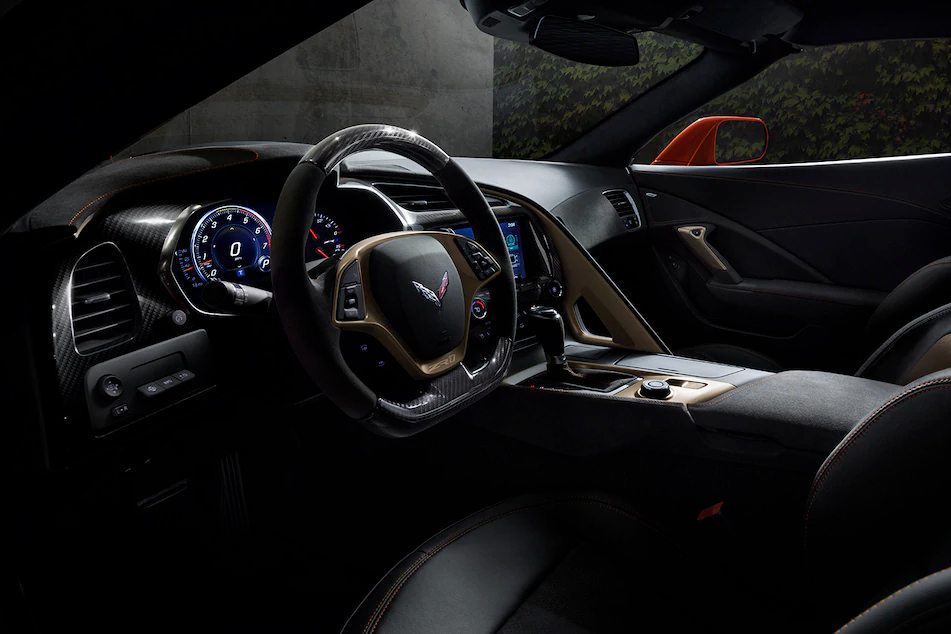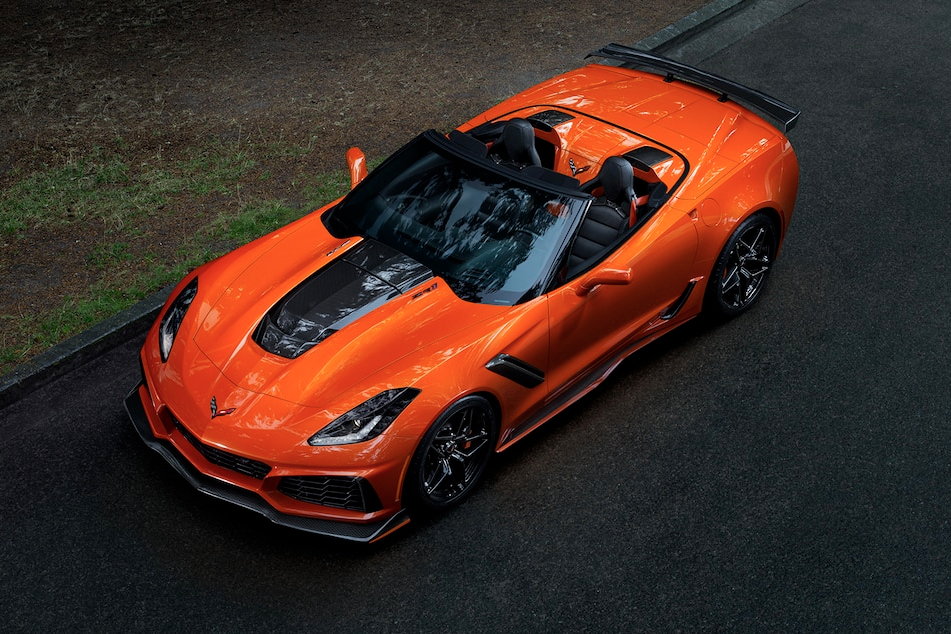
In the past couple of years, I’ve been lucky enough to spend a few days with three different Ferraris, a Cadillac ATS-V, and a BMW X4 M40i. I’m not trying to brag and I’m far from an expert when it comes to cars. I just want to set out for the record that I have spent a good number of hours behind the wheels of a good number of potent automobiles.
So when I got the opportunity to drive a Corvette ZR1, I was excited to add it to this growing roster. Would a $120,000 American-made sports car be all that much fun after driving a $300,000 Ferrari 488 or an equally expensive GTC4Lusso? After all, those cars pack in 660 horsepower and make zero to 60 in 3.1 seconds.
Well, as it turns out, yes.
Shortly before hopping into a charcoal-gray ZR1 on a sunny Kentucky day, I learned that this model of Corvette has 755 horses under the hood, a zero-to-60 record of just 2.85 seconds, and a fastest recorded speed of 212 mph. For those of you keeping score at home, that’s 7 miles per hour faster than the top speed of the aforementioned Ferraris and about 70 mph faster than I got “my” Corvette ZR1 going at the end of a straightaway.

Don’t worry, I was on a racetrack — the NCM Motorsports Park just down the road from the National Corvette Museum and not at all far from the factory where Chevy makes this OG American sports car, by the way.
After a few laps into the drive and several pedal-to-the-floor moments where I got well into the 120-plus mph range, I was more than sold on the ZR1. But I almost missed the chance to enjoy its true potential.
Going back about an hour before I fired the ZR1 up, I took part in a briefing with two drivers who work for NCM Motorsports. They would be serving as the pace cars for the drive in which I and four other journalists were taking part. The only rule? Don’t pass anyone. One pacer would be in the lead, one in the rear, and aside from that, we were just to enjoy the ride. Oh, and not crash.
As the pack set out, the lead car kept things slow and steady for about half a lap, then started to open up as we all spread out. He was taking turns at 40 to 50 miles per hour, and getting up to 7o or 80 on the straightaways. The second car — the first of the non-professional drivers — however, was not. He kept a steady pace of about 30 miles per hour on the turns and never went faster than 50 on the long, straight lengths of track. By the end of the second lap, I was … well … furious. And not going fast. Here I was in the most powerful car I’d ever driven, but I routinely hit higher speeds coming home from dropping my kid at school in our Toyota Highlander Hybrid.
Then, mercifully, the lead pace car pulled into a pit area and waved us all to follow. He got out of his car, made his way back to the second car, and whispered a few things through the window. Then he jogged back toward me and the driver in front of me and explained that our colleague was dropping back a bit in the order.
The day was saved.
We pulled out again, and within seconds we were all going well over 100 miles per hour.
Now the ZR1’s engine roared, its wheels gripped the road, and I felt genuine G-forces as I pressed home the pedal, leaned into curves, and shifted every few seconds, keeping the RPMs up and the power under tight control. Now the view out the side windows blurred while the track ahead came into clear focus. I watched the path the pace car followed around each turn and tried to match it, keeping my speed as fast as I could without feeling near loss of control (which I did only once for a few seconds following that 131 miles per hour top speed — there was a curve coming up fast at the end of the straight shot). Now I knew that this was one damn fine car, a car America could be proud to call its resounding answer to anything a European automaker put forth, and for less than half the price, too.
The Corvette ZR1 is by no means a cheap car, but it’s so well worth its price that it’s an aspirational vehicle for many. If $120,000 is way more than you want to spend, consider a Corvette Stingray. Those are just $55,900, and 460 horsepower ain’t bad.







